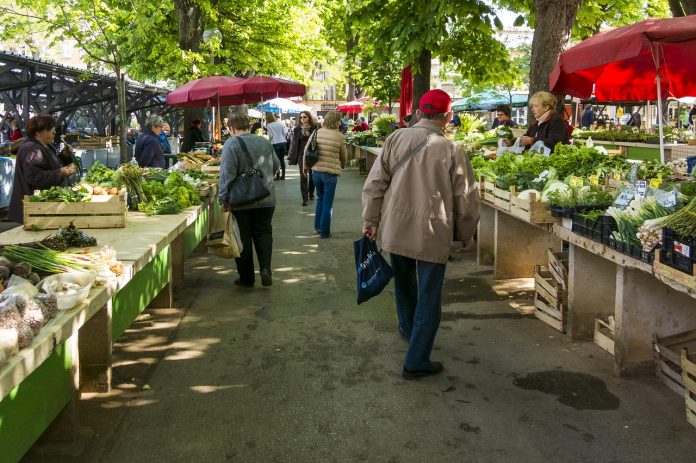UNIVERSITY PARK, Pa. — Pennsylvania farmers markets generate an estimated $100 million in sales each year, according to a new Penn State Extension analysis that provides a snapshot of farmers markets’ contribution to the local food economy in the commonwealth.
Using 2021 data collected from 15% of the farmers markets in Pennsylvania, the researchers found that these markets generated gross sales of about $18 million. The researchers then extrapolated these sales figures to take into account the more than 330 open-air community farmers markets in the state.
Their analysis indicated that these markets generated, conservatively, $100 million of direct economic activity over the six-month market season.
“Open-air farmers markets, on-farm markets and public markets are essential businesses that provide more than fresh food,” said Brian Moyer, Penn State Extension education program associate in business and community vitality. “They create jobs, help drive the local economy and allow farms and food artisans to retain a much higher portion of the food dollar.”
Project
This research was initiated at the end of 2020, when Penn State Extension received $10,000 from the Pennsylvania Department of Agriculture’s PA Preferred program to support a data collection project during the 2021 market season.
The project was aimed at creating a culture of data collection within markets and communicating the value of these businesses across the commonwealth.
“It is not unusual for farmers markets to collect data and share the results with local community stakeholders,” Moyer said. “What makes this project unique is that this is the first time any data collection project has been done on these markets on a statewide level.”
“It’s also worth noting,” he said, “that this data represents only the regular market season of June through October. Many winter markets that were not part of this project generate revenue during our colder months.”
Data
At the beginning of the project, market managers filled out a form with the market name, day of the week the market is open, county location, zip code, Supplemental Nutrition Assistance Program information and any additional matching dollars program.
Each week, market managers entered their customer counts, the number of SNAP transactions, SNAP dollars distributed and redeemed and SNAP bonus or matching dollars distributed and redeemed.
Market managers also asked their anchor produce and meat vendors for their number of daily transactions and whether gross sales were higher, lower or the same as the previous week. Penn State Extension researchers will continue data collection in the 2022 market season.
“Farmers markets are more than nice events in our communities,” Moyer said. “They are essential to our local food economy. Markets provide a common space for farms and food businesses to offer their products and incubate new businesses.”
For more information about the data collection project or the postseason survey, contact Moyer at bfm3@psu.edu or 484-269-0229.










